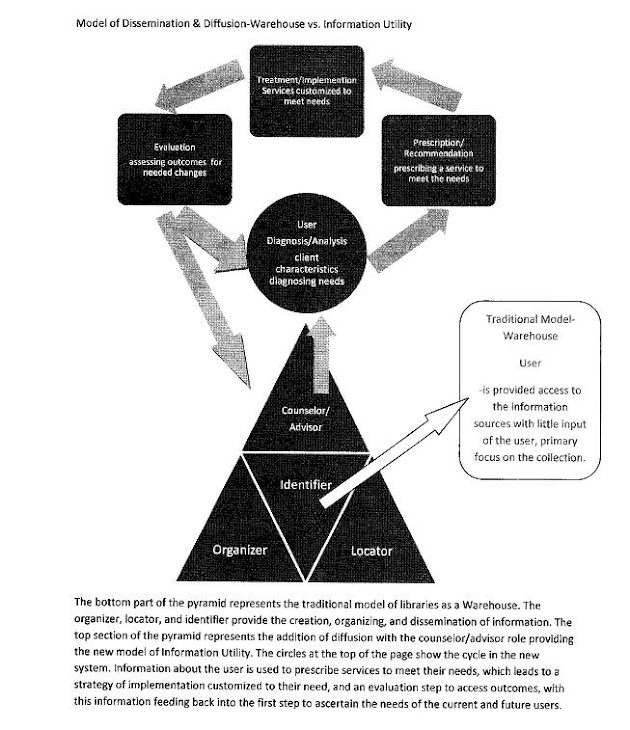I just read an article in American Libraries called “Design Thinking”. In the article, Steven J. Bell argues that librarians need to become design thinkers. He discusses the IDEO method developed at that leading design firm. Librarians mediate information from source to users but we find ourselves redefining how we fit into this new information based world. The heart of design thinking is to understand the problems before thinking of solutions. Not only do we often fail to determine the feasibility of new technology applications but we fail to even consider if our users will even value the service. We fail to determine the actual problem before implementing a solution.
- Understand-get to know your actual user population and how they perceive your services
- Observe-your users, how they work, what confuses them, how their needs can be met
- Visualize-brainstorm new ideas and concepts and how they will affect your users
- Evaluate/Refine-prototyping is key, test and improve processes
- Implement-this can be the longest and hardest part of the process
Even with limited resources this process can be used. Librarians can observe users in real life situations, engage them in discussion to ascertain useful data, and therefore take the first step in design thinking. By talking, identifying patterns, the design thinker can assess the gap between what exists and what needs to be done and come up with the solutions.
We need to create better library user experiences by engaging the people who use our libraries and helping them make a personal connection.
We need to make users identify us as a learning experience. Possible solutions can range from simply identifying procedures that create barriers for users, developing social and cultural experiences, to creating community recognition through technology leadership and support.
So what do you think? Do librarians need to become “Design Thinkers”?


1 comment:
It seems to me that part of what Bell is getting at is the need for a more client-based approach to library management. Even the term "user" has a very passive connotation from the perspective of the librarian. Someone comes in, uses that book over there and that's it - as Bell basically states.
If libraries take a lesson from the for-profit world and think of "users" and "patrons" as "clients," that kind of thinking would begin to take place. After all, people now have their choice between the Internet, books stores and cafes and the library. This can benefit users just as much as the library itself.
Post a Comment